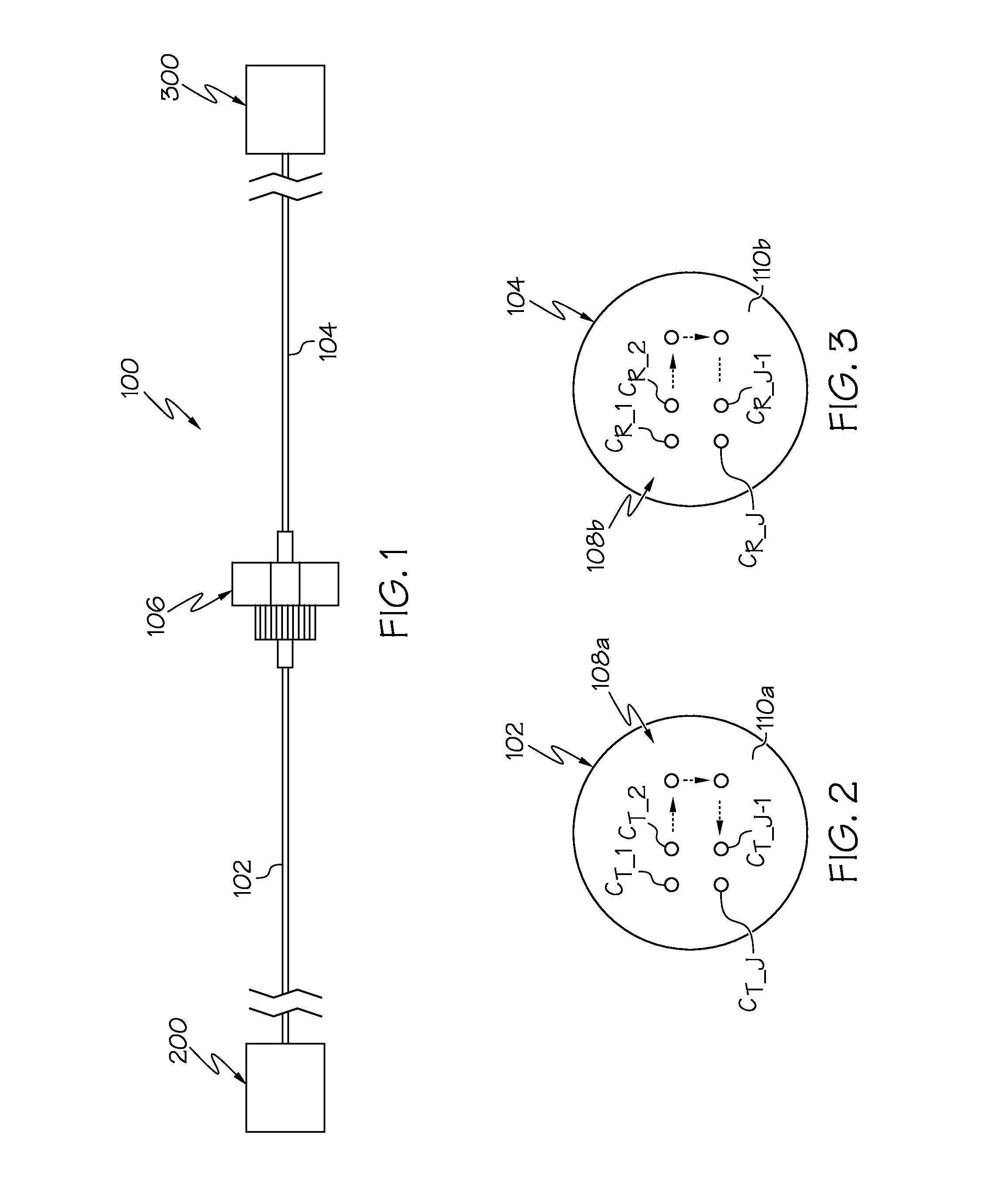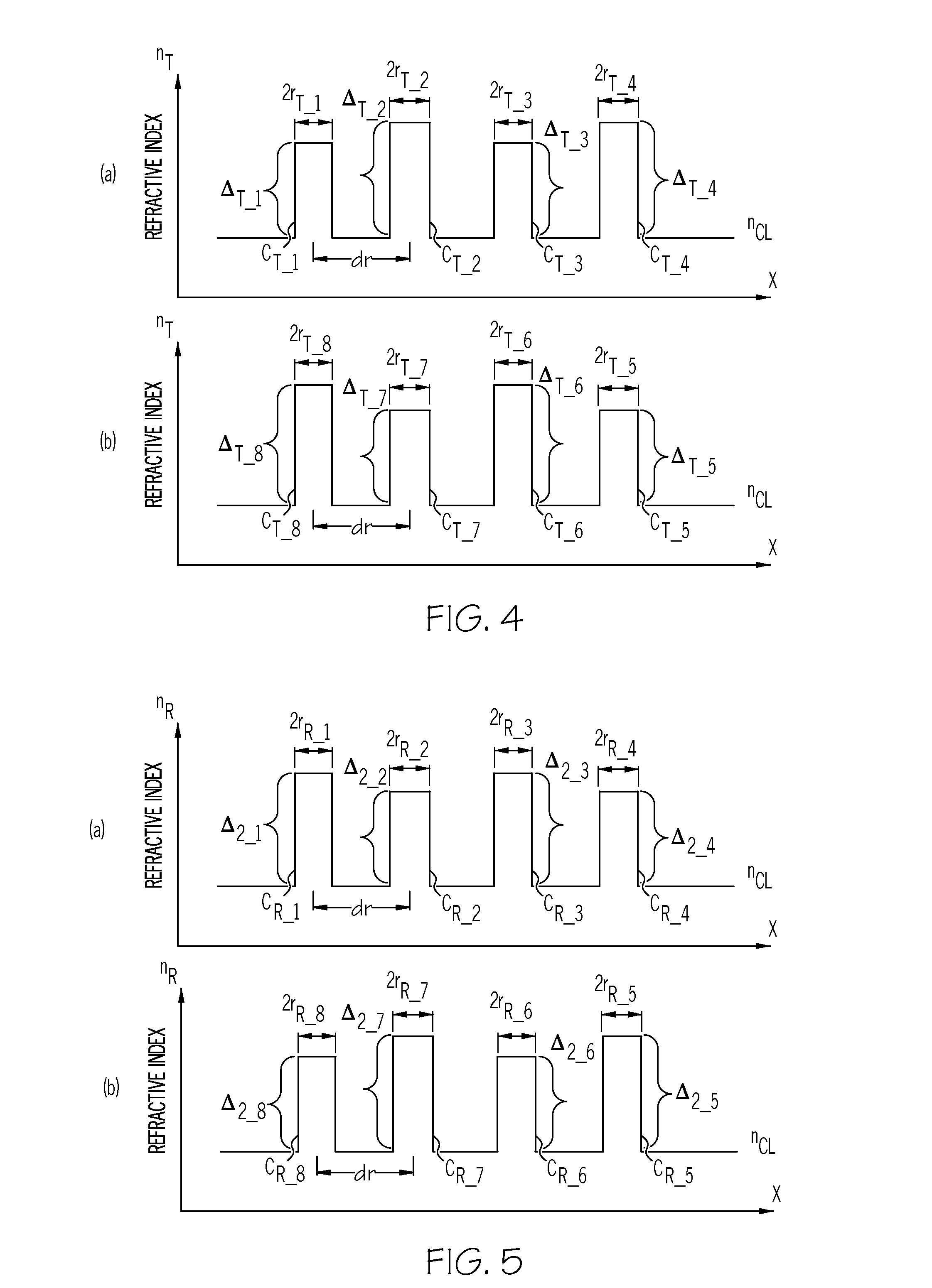Skew managed multi-core optical fiber interconnects
a multi-core, optical fiber technology, applied in the direction of cladded optical fibre, instruments, optical elements, etc., can solve the problems of multi-core optical fiber crosstalk between cores of fiber, significant increase in fiber manufacturing cost, capacity scaling, compactness,
- Summary
- Abstract
- Description
- Claims
- Application Information
AI Technical Summary
Benefits of technology
Problems solved by technology
Method used
Image
Examples
example 1
[0085]Table 1 below contains six design examples (D1-D6) of single-moded core elements which may be used for either the transmitting multi-core optical fiber or the receiving multi-core optical fiber of a multi-core optical fiber interconnect. Example D1 is similar to a standard single mode fiber core design. The fiber is single-moded at both 1310 and 1550 nm wavelength windows. Example D2 has a higher core delta and smaller core radius than a typical single-moded core element and the mode field diameters (MFDs) are smaller than those of standard single-mode optical fiber core elements. Example D3 has an increased core radius which has the effect of increasing the MFDs of the core element. However, the cutoff wavelength of the LP11 mode is higher than 1310 nm so the fiber is single-moded at only the 1550 nm windows. Example D4 has a graded-index refractive index profile with α=2. Examples D5 and D6 have step-index refractive index profiles which are surrounded by a low-index annulus...
example 2
[0086]Table 2 below contains six examples of core pairings which may be used to form interconnect core elements of a multi-core optical fiber interconnect, specifically referring to the Examples D1-D6 from Table 1 above. In these examples, Core I may be a transmitting optical fiber core element CT_j of the transmitting multi-core optical fiber and Core II may be a receiving optical fiber core element CR_j of the receiving multi-core optical fiber. Alternatively, Core II may be a transmitting optical fiber core element CT_j of the transmitting multi-core optical fiber and Core I may be a receiving optical fiber core element CR_j of the receiving multi-core optical fiber. As shown in Table 2, the effective index difference between the two cores in each pairing is greater than 0.2×10−4, which is sufficient to reduce the crosstalk between adjacent interconnect core elements. In addition, the spacing dr between adjacent core elements is greater than or equal to 25 um to further mitigate ...
PUM
 Login to View More
Login to View More Abstract
Description
Claims
Application Information
 Login to View More
Login to View More - R&D
- Intellectual Property
- Life Sciences
- Materials
- Tech Scout
- Unparalleled Data Quality
- Higher Quality Content
- 60% Fewer Hallucinations
Browse by: Latest US Patents, China's latest patents, Technical Efficacy Thesaurus, Application Domain, Technology Topic, Popular Technical Reports.
© 2025 PatSnap. All rights reserved.Legal|Privacy policy|Modern Slavery Act Transparency Statement|Sitemap|About US| Contact US: help@patsnap.com



